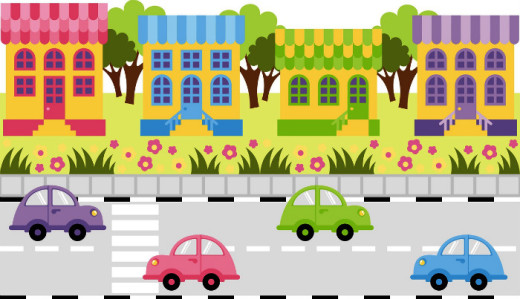Read an excerpt from this article below. You can download the full article by using the link at the end of the excerpt.
Things were simple in the good old days. Engineers designed roadways; land use planners set urban development policies; transportation planners established regional roadway networks; and architects created buildings and parks. Each group stayed happily within its own dominion, used its own language, and concentrated solely on its own priorities.
But then people started getting wise to the fact that the decisions being made by each of these groups were having a profound effect on the quality of life in our communities, and that we all suffered when those decisions undermined, rather than complemented, one another.
Planning commissioners, elected officials, residents, and businesses from communities large and small began asking engineers to consider the land use impacts of roadway design and location decisions. They directed planning staff to craft land use policies that would help reduce traffic congestion. They required developers — and their architects — to demonstrate how their proposed shopping centers and housing subdivisions would fit into the larger community, and how they would handle increased traffic by means other than just widening roads.
These were all good ideas and concerns, but they made life more complicated for those who hadn’t been trained to address them. People in various professions — planning, traffic engineering, design — began to see the need to work collaboratively and expand their knowledge. One result is a host of useful research and recommended practices.
One such product is a draft report recently released by a team of experts from the Institute of Transportation Engineers and the Congress for New Urbanism (with funding from the Federal Highway Administration and the U.S. Environmental Protection Agency). Context Sensitive Solutions in Designing Major Urban Thoroughfares for Walkable Communities: A Proposed ITE Recommended Practice (a title clearly coined by a committee) offers a rich trove of information for the brave souls from each profession — planning, engineering, and urban design — who are venturing together into this complex territory. See Sidebar, Context Sensitive Solutions: A Team Approach.
The product of five years of hard work, the report — which I’ll refer to simply as Designing Urban Thoroughfares — provides a much needed approach to integrating the transportation objectives of roadways with design considerations that take into account the surrounding built environment and pedestrian needs. The goal: to create vibrant, healthy, and walkable urban communities.
End of Excerpt
Hannah Twaddell is President and founder of Twaddell Associates, LLC, a consulting practice specializing in community planning, public engagement, facilitation, and education. Based in Charlottesville, Virginia, the firm provides planning, facilitation, and educational services to communities, government agencies, and private organizations across the U.S.
Before setting up Twaddell Associates, Hannah was a Senior Transportation Planner with Renaissance Planning Group, where she has worked on transportation planning and public involvement projects in several states. Prior to that, she served as Assistant Director of the Thomas Jefferson Planning District Commission (in Charlottesville) and as chief staff to the Charlottesville-Albemarle Metropolitan Planning Organization.
You must be logged in or a PlannersWeb member to download this PDF.
